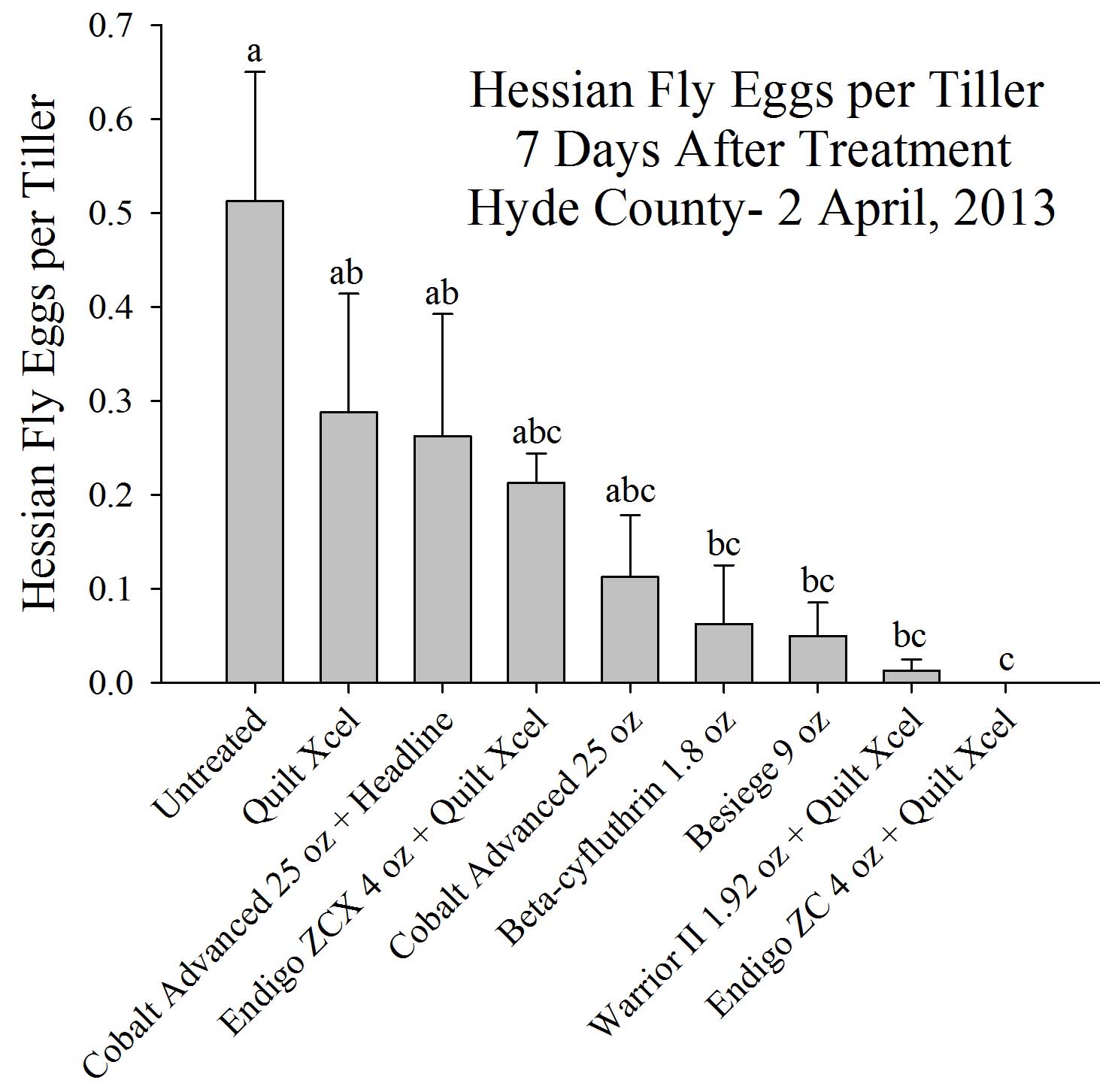Should You Spray for Hessian Fly?
go.ncsu.edu/readext?325683
en Español / em Português
El inglés es el idioma de control de esta página. En la medida en que haya algún conflicto entre la traducción al inglés y la traducción, el inglés prevalece.
Al hacer clic en el enlace de traducción se activa un servicio de traducción gratuito para convertir la página al español. Al igual que con cualquier traducción por Internet, la conversión no es sensible al contexto y puede que no traduzca el texto en su significado original. NC State Extension no garantiza la exactitud del texto traducido. Por favor, tenga en cuenta que algunas aplicaciones y/o servicios pueden no funcionar como se espera cuando se traducen.
Português
Inglês é o idioma de controle desta página. Na medida que haja algum conflito entre o texto original em Inglês e a tradução, o Inglês prevalece.
Ao clicar no link de tradução, um serviço gratuito de tradução será ativado para converter a página para o Português. Como em qualquer tradução pela internet, a conversão não é sensivel ao contexto e pode não ocorrer a tradução para o significado orginal. O serviço de Extensão da Carolina do Norte (NC State Extension) não garante a exatidão do texto traduzido. Por favor, observe que algumas funções ou serviços podem não funcionar como esperado após a tradução.
English
English is the controlling language of this page. To the extent there is any conflict between the English text and the translation, English controls.
Clicking on the translation link activates a free translation service to convert the page to Spanish. As with any Internet translation, the conversion is not context-sensitive and may not translate the text to its original meaning. NC State Extension does not guarantee the accuracy of the translated text. Please note that some applications and/or services may not function as expected when translated.
Collapse ▲Around this time of the year, Hessian fly adults are definitely active. Many growers spraying herbicide are wondering if they will get a return on investment tank mixing with an insecticide- something I’ve done on my early planted wheat already. Long story short, a spray this fall will only be worthwhile if you meet all these conditions: 1) planted wheat during October; 2) have historical pressure; 3) planted a susceptible variety (varietal susceptibility at this link); 4) have not used an insecticidal seed treatment and are past two weeks following planting. In the vast majority of these cases, using only one of these management tactics will effectively manage Hessian fly. Keep in mind that the insecticide is targeting adults, which are only active when temperatures are above 50 degrees F. So a spray today would not be as effective as a spray following this cold spell. Read on for more detailed information.
The time of peak Hessian fly activity can vary from year to year. For example, in the fall of 2010 and 2013, Hessian fly was active from mid-November to mid-December. In 2012, Hessian fly pressure was heaviest around the end of November to the beginning of December. We planted wheat at both Kinston and Plymouth this year early (October 10 and 24, 2014) to attract Hessian flies. There were eggs two weeks after planting where the wheat was planted October 10 and larvae started showing up the week following eggs (the last week of October). For the wheat planted October 24, we have just started seeing eggs. As usual, the resistant varieties are the best management tactic of choice (best return on investment). We’ve seen a little bump from using a seed treatment and spraying.
The best time to spray is when eggs are first present, but these are difficult to see. Some consultants and scouts are trained to find them. Without scouting eggs, you will be just guessing as to whether or not Hessian fly is in your field. There are certain situations where multiple tactics are needed to prevent yield loss. These are only under the heaviest pressure situations and should be based on your past experience with this pest.
As mentioned above, the point of the spray is kill to adult flies, with the hope of some residual to kill flies that may attack in the future. Sprays may have some efficacy on larvae as they hatch from the eggs, but this has never been demonstrated with research and is open to question. Once larvae reach the base of the plant, they remain protected from foliar insecticide sprays. Results are best when sprayed at the 2-3 leaf stage of wheat, or slightly before. Use the highest labeled rate of your choice of pyrethroid.

Note: Quilt Xcel and Headline are fungicides with no activity on Hessian fly. Endigo ZC is lambda-cyhalothrin + thiamethoxam, Warrior II (Karate Z) is lambda-cyhalothrin, Baythroid XL is beta-cyfluthrin, Tombstone is cyfluthrin (active on Hessian fly), and Cobalt Advanced is lamda-cyhalothrin + chlorpyrifos.
Finally, you can link to a web version of the management publication and download a free .pdf with interactive links to web-based data. Also, see this video on Hessian fly biology management. Insecticide efficacy can be found below.


